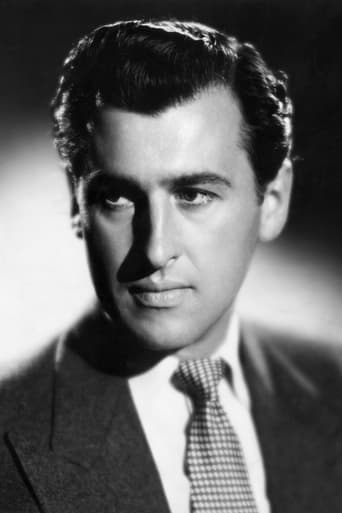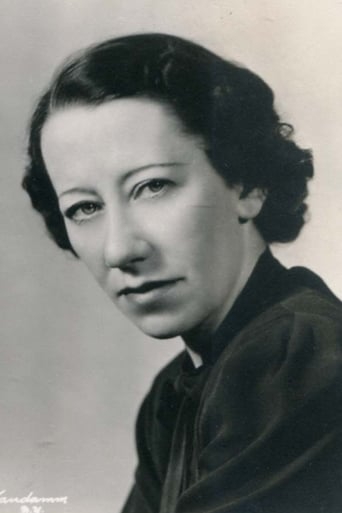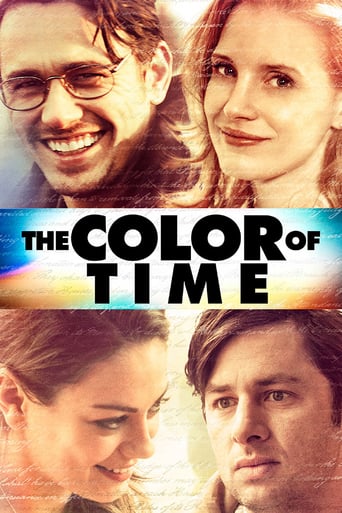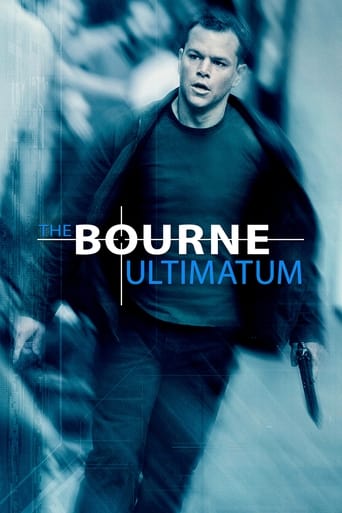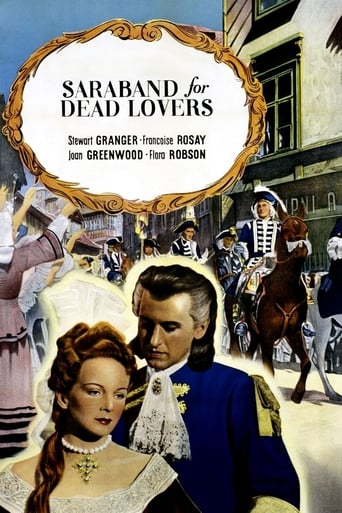
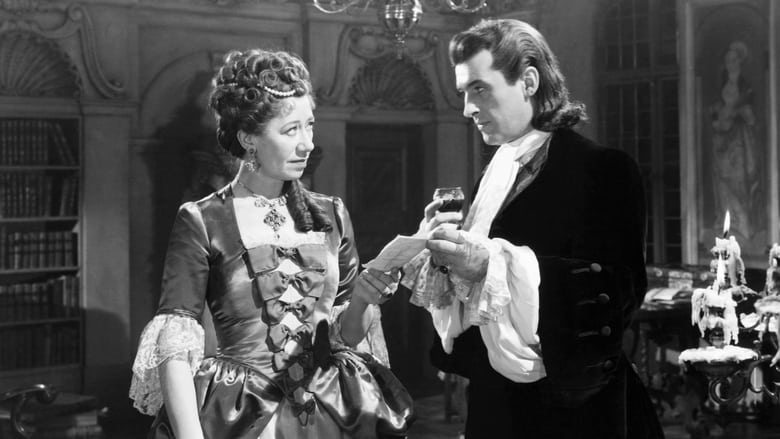
Saraband for Dead Lovers (1948)
Sophie Dorothea is a young woman forced into a loveless marriage with Prince George Louis of Hanover. George Louis is later crowned King George I of England. Despairing of ever experiencing true love, the depressed queen finds life at court no solace. Sophie then falls for a dashing Swedish soldier of fortune, Count Konigsmark.
Watch Trailer
Cast
Similar titles
Reviews
This movie is the proof that the world is becoming a sick and dumb place
best movie i've ever seen.
As Good As It Gets
It is an exhilarating, distressing, funny and profound film, with one of the more memorable film scores in years,
After 40 minutes of this film, I still had no idea what was going on. The story is complicated, confusing, slow-paced, uninteresting and full of talking. This is a true story that has had all the interest taken out of it. No wonder the film is forgotten - it's just not at all engaging. This is a terrible shame, especially as the story deals with the ancestors of the current royal family at the time when their ancestry was about to switch to the German lineage. I feel the film-makers have done a huge dis-service to what should have been a fascinating story. What we get is a slow snorefest of no interest with cast members delivering their dialogue in a very deliberately slow-paced manner. The worst offender is Joan Greenwood as Sophie Dorothea. She is terrible. All her dialogue is overdone in a slow, deliberate manner that is totally inappropriate and spoken for dramatic effect without any realism. The film is basically about a doomed love affair. That's how I'd describe it. However, it should be about so much more given the subject matter and significance to the English monarchy. I must tip my hat to fellow reviewer "theowinthrop" who explains the situation perfectly in his review. I suggest you read that for all the interest and knowledge surrounding this topic and forget about this film. You have been warned!
Long before the film was made, I read the book it is based on, namely Konigsmark by A.E.W.Mason. I found the book enthralling and was more than eager to see the film, which turned out to be equally magical, exciting and romantic. To my mind the actors were superbly cast and the sets and costumes so beautifully designed that I felt I was living the events myself and the book and the historical period came vividly to life. I do hope that copies of the film have not been lost and that one day it will reappear perhaps in a remastered form. It is one of the gems of forties' British film-making and deserves to be seen by a present-day audience.
Saraband for Dead Lovers tells the tragic story of Princess Sophia Dorothea of Celle who married Prince George Louis of Hanover most unhappily. Her's is one of the saddest stories concerning royalty ever.This may have been Joan Greenwood's finest performance on screen. She's really the only decent person in this entire cast. For reasons of politics, she's rushed into a marriage with George Louis and has two children by him, a boy and girl. At the time this is all taking place in the 1680s, there's no reason to suspect that these kids will be nothing more than the Electoral Princes of Hanover in the Holy Roman Empire.But through their grandmother, played here by the indomitable French actress Francoise Rosay, they are descended from James I, the first king of the United Kingdoms of Scotland and England. She never lets them forget that for a moment. Actually in fact a whole lot of people in 1689 would have to clear out of the way for Peter to become King of Great Britain. But over the next two decades, that's exactly what did happen. One thing the Hanover clan had going for them, they were firm Protestants and at that point there were too many people in Great Britain who had a vested interest in an unquestioned Protestant succession. It was the Hanoverian ace in the hole.But before all these events occur Joan Greenwood falls head over heels for the dashing Swedish Count Philip of Konigsmarck as played by Stewart Granger. Granger probably plays Konigsmarck a lot better than he actually was, which was a military man who was not above a little bedroom politics to get what he wanted. Before becoming involved with the younger and more attractive Greenwood, Granger was providing a little nookie on the side to Flora Robson. Robson was the old mistress of the Duke Ernest Augustus played here by Frederick Valk, but the old girl wanted something a little livelier which Granger provided for a few favorable mentions. As in real life Granger moved away when he found something better and Flora reacted with the fury of a woman scorned.Some of you might recognize a bit of Anna Karennina in this story and I wouldn't be surprised if Count Tolstoy took this story as inspiration when he wrote his epic classic.Peter Bull and Joan Greenwood are the direct ancestors of the present monarch of the United Kingdom and her family. In 1715 Peter Bull became George I of Great Britain and distinguished himself by never learning to speak one drop of English. In fact all he saw Great Britain as was a cash cow to finance various continental Hanoverian ventures. But the little boy in this film grew up to be George II and so on and so on until Elizabeth II.For what happens to lovers Granger and Greenwood you have to watch the film for. It's a story that the royals aren't exactly proud of.
This film is about a scandal that almost changed history. Unless you study geneology, you probably are unaware of the exact line of descent of the present Royal Family of England. Most people don't really think about it but the House of Windsor has only had that name since 1917 (when it's German name was changed in World War I). It was known (from 1901 - 1917) as the House of Saxe - Coburg Gotha, because Edward VII's father (Prince Albert - Queen Victoria's husband) was the Prince of Saxe - Coburg Gotha. Prior to 1901 (when Edward VII inherited the British throne) the Royal Family was known as the House of Hanover. The Hanovarians ruled England from 1714 - 1901 through six monarchs. But prior to 1714, the Royal Family were the Scottish based Stuarts (who ruled, with one eleven year gap, from 1603 - 1714). It's confusing, but much political turmoil is involved in the change from Stuarts to Hanovarians.The Stuarts were cousins of the Tudors, and when the great Elizabeth I died in 1603 she was without Tudor heirs. James VI of Scotland (son of Elizabeth's rival and cousin, Mary, Queen of Scots) became James I of England. James I had two sons and one daughter. The daughter, Elizabeth, married a German Protestant prince, the Elector of the Palatinate (now part of the Czech Republic). Her descendants included Prince Rupert, the brilliant cavalry general for his uncle King Charles I in the Civil Wars of the 1640s. One of the descendants of Elizabeth Stuart was Princess Sophia, the wife of the Elector of Hanover. In the 1690s, the elderly Princess found that (except for Princess Anne of England, and her son William, Duke of Gloucester - a sickly youth who would die in 1701) she was next in line to the British throne if anything happened to King William III and his wife Queen Mary II. If anything happened to Princess Sophia, her son Prince George inherited her claim to the British throne. Sorry for this confusion of inherited titles presumptive, but that is how it went.Prince George was not a loveable person. He was a demanding bully. He had married a cousin named Sophia Dorothea of Celle for her inheritance (needed to beef up his German territories around Hanover). George's father (the Elector of Hanover) had a mistress, Countess von Platen, who wielded great influence in the German state. This Countess introduced a young Swedish aristocrat, Count Philippe Koeningsmarck, to the court. She liked the Swedish Count, who was a military expert. Actually she more than liked him - she adored him. While Koeningsmarck was grateful, he did hold her at arms length. This would prove a mistake. His second mistake was that he and Princess Sophia Dorothea of Celle met and became too chummy. Letters and diaries of the Princess survive, and suggest a platonic relationship, but it might have been closer. It angered the Countess, who felt her friendship was slighted. It angered Prince George, who (while he had many mistresses) did not like the snickers of people thinking him a cuckold. One day Koeningsmarck was called to the royal palace. He was never seen again, although many years later a skeleton of a man was found buried in an obscure corner there. Platen (most likely) decoyed the Swede, and had him assassinated - she found her influence in court dead after that, and in her last years was thought to be plagued by Koeningsmarck's ghost. In European circles the scandal spread, especially as it affected the way Englishmen viewed the prospected Protestant heirs to the throne. Had the choice of Hanovarians been needed to be made in 1695 - 1701, chances are George and his mother would have been by-passed. But the War of the Spanish Succession began in 1701, and lasted through the reigh of Queen Anne (the last Stuart). Her half-brother, James the Old Pretender (father of Bonnie Prince Charlie)was a Catholic who supported his cousin Louis XIV in the war. Prince George, despite the scandal, became King George I in 1714. And his descendants have ruled Britain ever since.Poor Princess Sophia Dorothea of Celle never was Queen. George did not divorce her, but he had her imprisoned in her castle at Celle until she died in 1726. Her son and daughter by George never forgave him, and the boy (the future King George II) made life very difficult for his father as a result. George I died in 1727. There is a story (which one would like to believe) that while visiting Hanover shortly after his wife's death, a note was thrown into his carriage from a crowd. The note was from Sophia Dorothea, and it cursed George for his bullying and cruelty to her and others. George, reportedly, had a seizure reading this vitriolic message from the dead, and was paralyzed as a result until he died. Unfortunately this story seems to be false.The film is pretty close to the actual tale, though it makes the relationship between the Princess of Celle and Koeningsmarck seem more of a love affair than it may have been. Stewart Granger is fine as the Swedish Count, and Joan Greenwood (she of the plummy toned voice) is equally good as the Princess. Peter Bull, that splendid British heavy, does a good Prince George, bullying his wife and servants, but capable of sly viciousness when he wants to retaliate against Koeningsmarck. And Flora Robson shows the inner demons driving her to destroy the young protegee who can't reciprocate a love he never had in the first place. Anthony Quayle, as one of the rivals of Koeningsmarck at the little royal court, is as good as he usually is, and lives up to the warning of never turning your back on Quayle in a duel!Oddly enough, the Koeningsmarck family left a larger shadow on European history than this film suggests. At one point in the script, Philippe mentions that his younger brother (Count Karl von Koeningsmarck) was tried for murder. It is true, and has so far escaped a motion picture treatment. In 1681, Lady Elizabeth Ogle was the richest heiress in England, and was being romanced by Koeningsmarck and by Thomas Thynn of Longleat, who was the richest commoner in England. Karl von Koeningsmarck had three thugs attack and kill Thynn in his coach in London. The three thugs were found guilty of the murder and executed, but the Count (due to influence from King Charles II) was acqitted. However, Count Karl died a few years afterwards. He and Phillipe had a sister Elizabeth, who had an affair with Augustus the Strong, Elector of Saxony and elected King of Poland. Their illegitimate son was Maurice, Marachel de Saxe of France, the leading European general from 1722 - 1750. Marachel Saxe was known to be particularly rough in leading his men against armies led by members of the Hanovarian royal family in the wars of this period. Apparently he was trying to even the score for poor Uncle Philippe!
